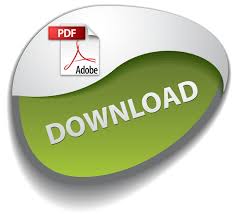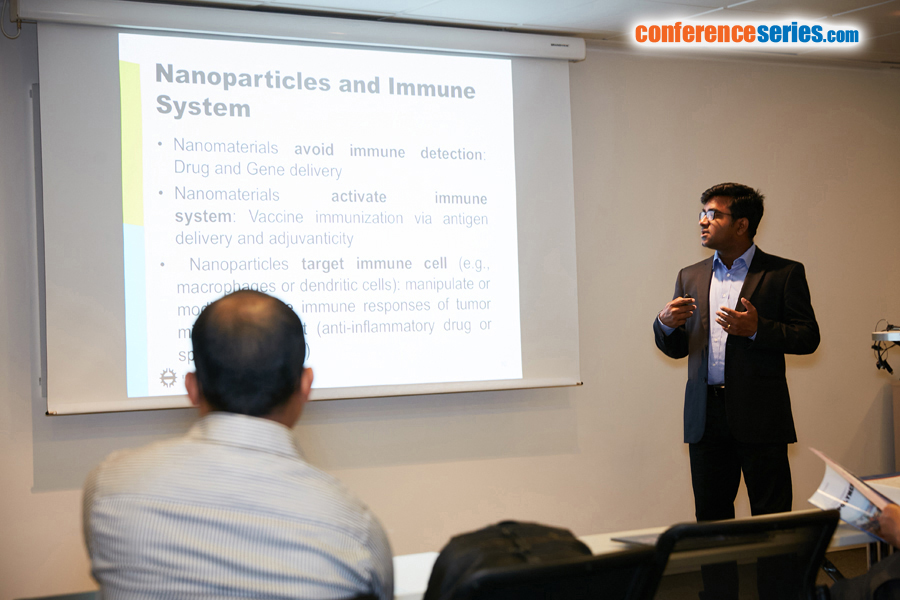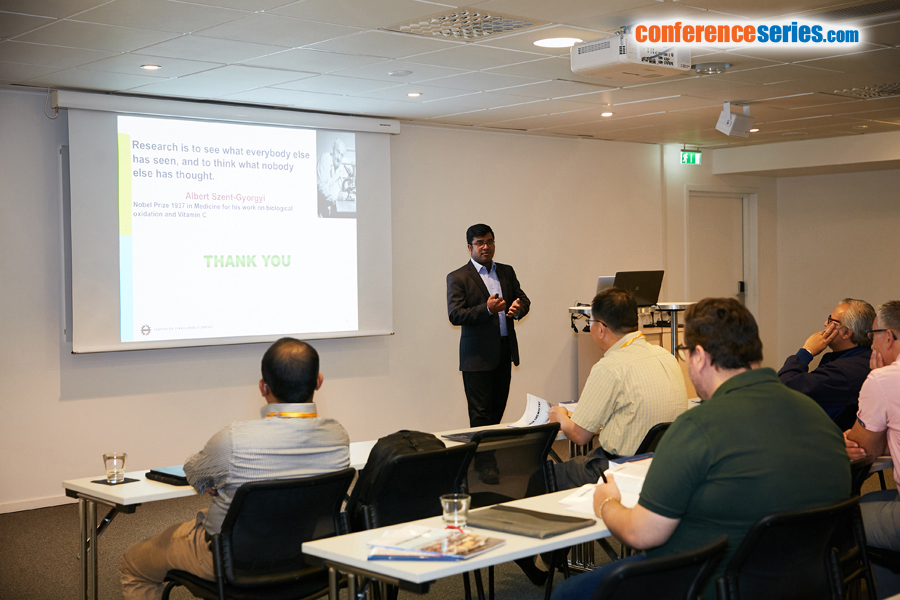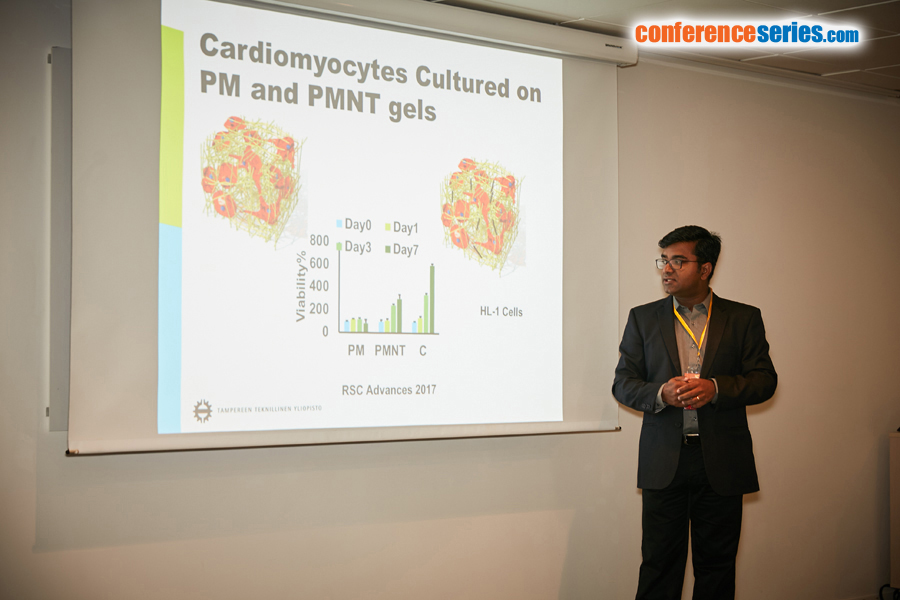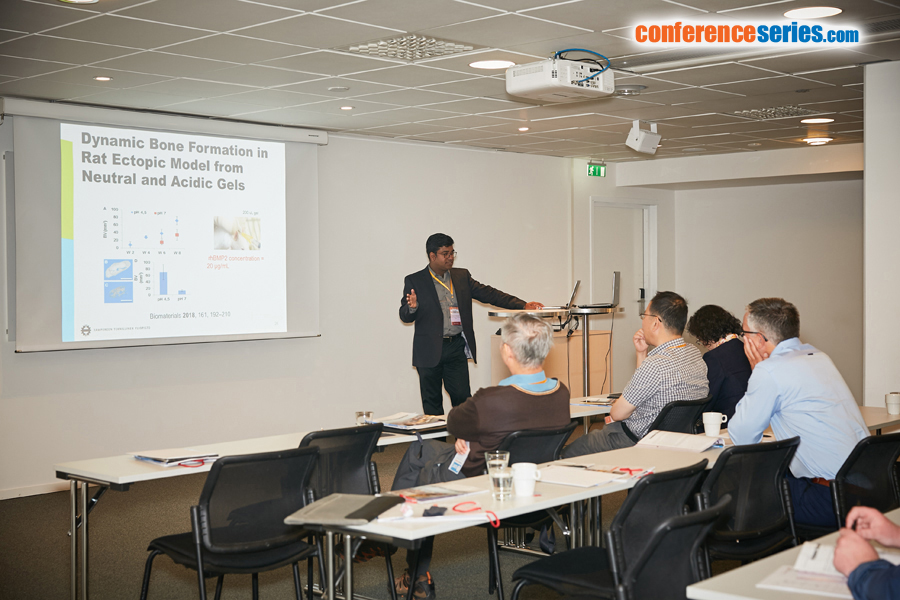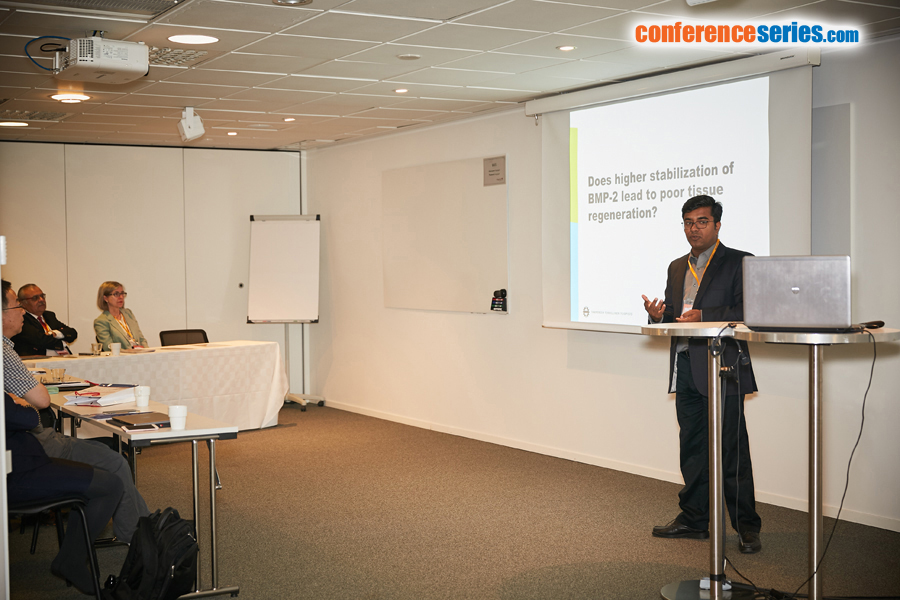
Oomen P Oommen
Tampere University of Technology, Finland
Title: Glycosaminoglycan derived nanocarriers: Exploiting natural biopolymers for tumor targeting and mitigating immune activation
Biography
Biography: Oomen P Oommen
Abstract
Glycoaminoglycans, such as hyaluronic acid (HA) and chondroitin sulfate (CS), are natural biopolymers present in the extracellular matrix (ECM) that have generated great interest for designing drug delivery systems. As HA and CS possess a unique ability to target CD44 receptors that are overexpressed in malignant solid tumors (nearly 6-8 folds higher than normal tissues), they have been used for anticancer therapeutics. Moreover, hyaluronidase, a ubiquitious enzyme that degrade these polymers are expressed highly in these malignant tumors, resulting in rapid turnover of these polymers in tumor tissue. We have recently engineered HA and CS derived soft nanocarriers and compared their tumor targeting properties and evaluated their role in the activation of complement and coagulation cascade reactions in human blood. We found that CS undergoes faster cellular uptake properties than HA. CS being a sulfated polymer, unlike HA, demonstrated activation of complement at higher concentrations. Thereafter, we engineered CS coated gold nanoparticles following a green chemistry strategy. Doxorubicin (DOX) a clinically used antineoplastic agent was conjugated to the CS-gold nanoparticle (CS-Au-DOX) via pH-responsive hydrazone linkages, which yielded sustained drug release profile at acidic pH. Unlike other colloidal gold particles, CS-AuDOX was extremely stable and could be stored as a lyophilized powder. The CS-Au-DOX exhibited higher toxicity towards CD44 overexpressing human colon cancer cells (HCT116 and GP5D) as compared to free DOX. Interestingly, CS-Au-DOX also overcame multidrug resistance induced by p-glycoprotein overexpression in ovarian cancer cell line A2780. The confocal laser scanning microscopy images clearly showed nuclear transport of these DOX loaded nanoparticles. We incubated free DOX and CS-Au-DOX with non-anticoagulated human whole blood to estimate the thromboinflammation and platelet aggregation. We observed that doxorubicin (DOX) induced acute platelet toxicity and trigger coagulation cascade in human whole blood model. CS-Au-DOX on the other hand mitigated DOX mediated toxicity to human platelets and suppressed thromboinflammation. Our studies reveal that GAG derived nanoparticles offer new avenues to design innocuous drug delivery system that could mitigate drug mediated side effects.
